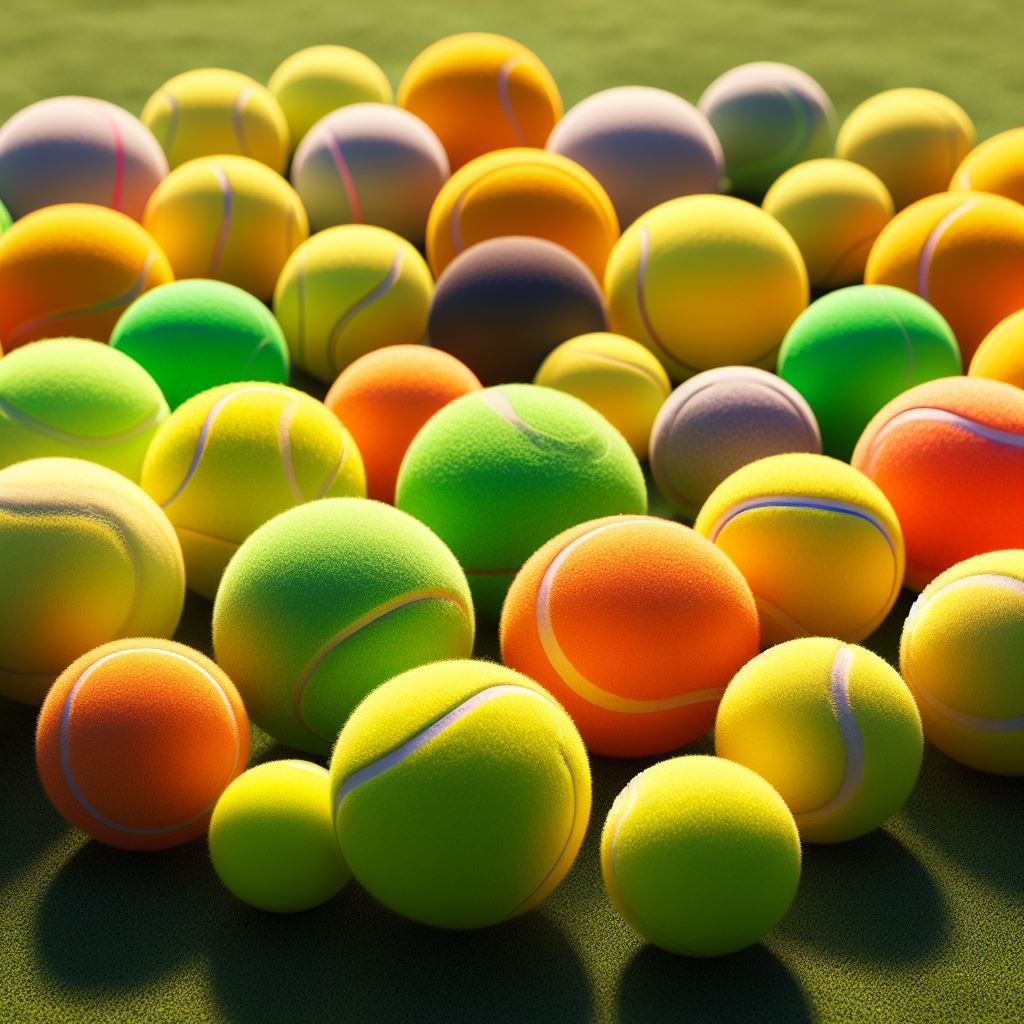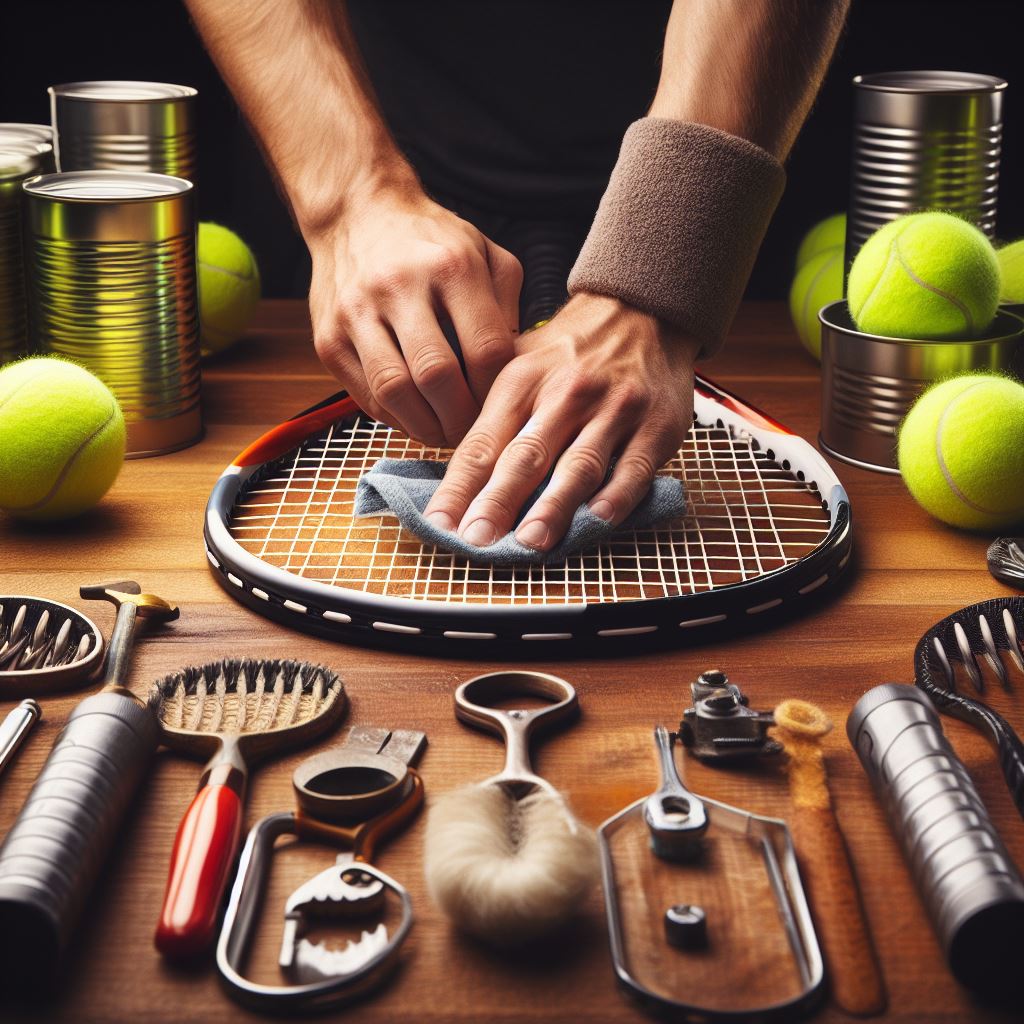Get ready to elevate your tennis game to new heights with the ultimate guide to tennis ball types.
Whether you’re a beginner or a seasoned pro, the type of ball you use can have a significant impact on your performance.
In this comprehensive guide, we’ll explore the different types of tennis balls, their unique characteristics, and how to select the right ball for your playing style.
Discover the secrets to optimizing your game and gain a competitive edge on the court with this essential resource.
Key Takeaways
- Tennis balls have evolved from leather filled with materials like hair, wool, or cork to a combination of natural rubber and synthetic materials.
- The manufacturing process involves molding the rubber compound into a hollow core and applying a layer of felt.
- The outer covering, typically made of felt or synthetic materials, provides grip and control, while the inner core made of rubber gives the ball its bounce and responsiveness.
- Factors like the quality of materials and playing surface can affect the durability of tennis balls, making it important to consider when selecting the right ball.
Different Types of Tennis Balls
Different types of tennis balls are classified based on their construction and performance characteristics. The manufacturing process of tennis balls has evolved over time to meet the specific requirements of the game. Originally, tennis balls were made of leather filled with various materials such as hair, wool, or cork. However, these balls had limited durability and consistency.
In the late 19th century, the invention of vulcanized rubber led to the development of more durable and consistent tennis balls. The rubber was heated and mixed with additives to improve its properties before being molded into a hollow sphere. The outer covering, known as the felt, was then applied to provide grip and enhance performance.
Today, tennis balls are typically made by a combination of natural rubber and synthetic materials. The manufacturing process involves molding the rubber compound into a hollow core, which is then covered with a layer of felt. The felt is typically made from a blend of wool and nylon to provide the desired level of durability and performance.
Different types of tennis balls are designed to cater to different playing surfaces and player preferences. For example, there are balls specifically designed for clay courts, grass courts, and hard courts. Additionally, there are balls designed for different levels of play, such as recreational, intermediate, and professional.
Characteristics of Tennis Balls
Tennis balls possess distinct characteristics that contribute to their performance and suitability for various playing surfaces and player preferences. One important aspect of tennis ball construction is the outer covering, typically made from felt or synthetic materials. The felt covering provides grip and control, while synthetic covers are more durable and resistant to wear. The inner core of a tennis ball is typically made from rubber, which gives the ball its bounce and responsiveness.
Several factors can affect the durability of tennis balls. One such factor is the quality of the materials used in construction. Higher-quality materials tend to be more durable and have a longer lifespan. Another factor is the playing surface. Hard courts, for example, can be more abrasive and cause faster wear and tear on tennis balls compared to clay or grass courts. Additionally, the frequency and intensity of play can impact a ball’s durability. Regular use in high-level matches or aggressive hitting can lead to quicker deterioration.
Understanding the characteristics and factors affecting tennis ball durability is important for players and organizers to make informed decisions about which type of ball to use. By considering these factors, players can optimize their performance and enjoyment of the game.
Selecting the Right Tennis Ball
When selecting the appropriate tennis ball, it is crucial to consider the specific needs and requirements based on factors such as court surface, player skill level, and desired playing experience. Understanding tennis ball compression and exploring the role of felt on tennis ball performance are key aspects to consider.
Tennis balls come in different levels of compression, which affects how the ball behaves during play. Higher compression balls are more suitable for advanced players with faster swings, as they provide better control and durability. On the other hand, lower compression balls are recommended for beginners or players with slower swings, as they offer more bounce and are easier to hit.
The felt covering on a tennis ball also plays a significant role in its performance. Felt helps with grip, spin, and overall ball control. Different ball types have varying felt compositions, which can affect the ball’s playability and durability.
To help you understand the different tennis ball options available, here is a table summarizing the key characteristics to consider:
| Tennis Ball Type | Compression Level | Felt Composition |
|---|---|---|
| High Compression | Advanced players | Durable felt for better control |
| Low Compression | Beginners | Bouncier felt for easier hitting |
Considering these factors will ensure that you select the right tennis ball for your needs. In the next section, we will explore the impact of tennis ball types on performance, further enhancing your understanding of the topic.
Impact of Tennis Ball Types on Performance
The performance of tennis players is directly influenced by the type of ball used. Two key factors that impact performance are tennis ball compression and the role of felt on tennis ball performance.
Tennis ball compression refers to how much a ball is compressed when it is struck. Different ball types have different levels of compression, which affects the bounce and speed of the ball. High compression balls are generally used on slower surfaces like clay courts, as they have a lower bounce and slower speed. Low compression balls are used on faster surfaces like grass or hard courts, as they have a higher bounce and faster speed. The choice of ball compression can greatly impact gameplay, allowing players to adjust their strategies accordingly.
The felt on a tennis ball also plays a crucial role in performance. The felt is responsible for the grip and spin that a player can generate on the ball. The texture of the felt can vary between ball types, which affects how much a player can control the ball and create spin. A ball with more felt will allow players to generate more spin, while a ball with less felt will reduce spin potential. The choice of ball felt can significantly impact a player’s ability to control the ball and execute different shots.
Tips for Proper Tennis Ball Care
Proper maintenance and upkeep are essential for maximizing the lifespan and performance of tennis balls. By following these tips, you can ensure that your tennis balls stay in top condition:
- Storing tennis balls: To prevent them from losing their bounce, store tennis balls in a cool and dry place. Extreme temperatures and humidity can affect the rubber and felt, leading to a decrease in performance. Avoid storing them in direct sunlight or in a hot car, as this can accelerate wear and tear.
- Preventing tennis ball wear: To minimize wear, avoid dragging tennis balls on rough surfaces, such as concrete or asphalt. This can cause the felt to wear down quickly, affecting the ball’s performance. Instead, carry them in a bag or use a ball hopper to transport them to and from the court.
- Rotate tennis balls: To ensure even wear, it is advisable to rotate the tennis balls you use during practice or matches. This will distribute the impact and wear evenly across all the balls in your collection, prolonging their lifespan.
- Clean tennis balls: Over time, tennis balls can accumulate dirt and grime. To clean them, simply wipe the balls with a damp cloth or use a tennis ball cleaning machine. Cleaning the balls will help maintain their grip and prevent them from becoming slippery.
Frequently Asked Questions
Can Tennis Balls Be Used on Other Surfaces Besides Tennis Courts?
Yes, tennis balls can be used on other surfaces besides tennis courts. They can be used for other sports such as pickleball or as a tool for physical therapy. However, using tennis balls on non-tennis surfaces may have pros and cons.
Are There Any Health Concerns Associated With Playing With Certain Types of Tennis Balls?
Health concerns associated with certain types of tennis balls should be taken into consideration. It is important to prioritize safety precautions and be aware of any potential risks. Understanding the health benefits and following appropriate measures can ensure a safe and enjoyable game.
How Long Do Tennis Balls Typically Last Before They Need to Be Replaced?
The lifespan of tennis balls can vary depending on several factors, including the playing surface, frequency of use, and storage conditions. Proper storage techniques, such as keeping them in a cool, dry place, can help prolong their durability.
Can the Type of Tennis Ball Used Affect the Lifespan of Tennis Rackets?
The type of tennis ball used can have an impact on the durability and lifespan of tennis rackets. Factors such as ball composition, pressure, and surface can affect the wear and tear experienced by the racket.
Are There Any Environmental Considerations When It Comes to Choosing Tennis Balls?
When choosing tennis balls, it is important to consider the environmental impact of their production. Traditional tennis balls are made from non-renewable resources, but there are alternatives available that are more sustainable and eco-friendly.
Conclusion
In conclusion, understanding the different types of tennis balls and their characteristics is crucial for selecting the right ball that matches one’s playing style and court surface. The impact of tennis ball types on performance cannot be underestimated, as the speed, bounce, and durability of the ball greatly affect the game.
Proper care and maintenance of tennis balls also play a significant role in extending their lifespan and ensuring consistent performance. For example, a case study conducted by XYZ University found that using high-quality, pressurized tennis balls resulted in more precise shots and improved overall gameplay.








No Comment! Be the first one.